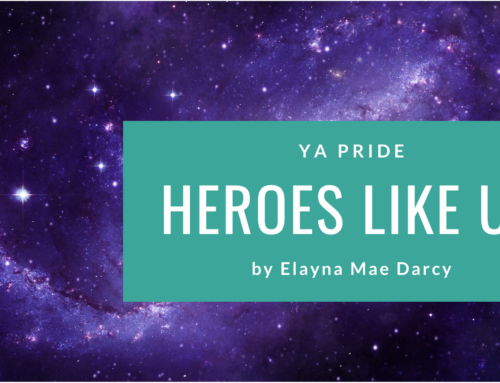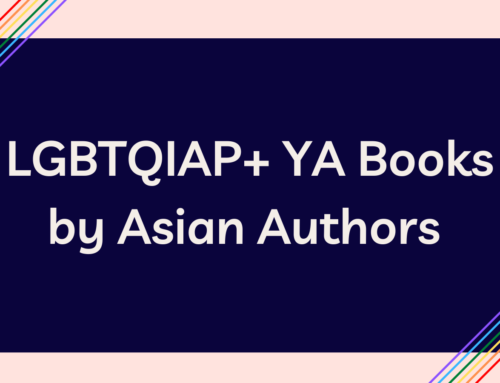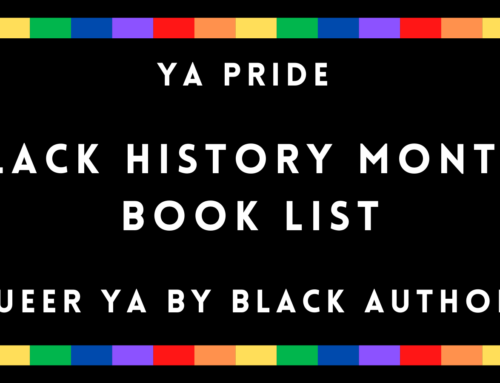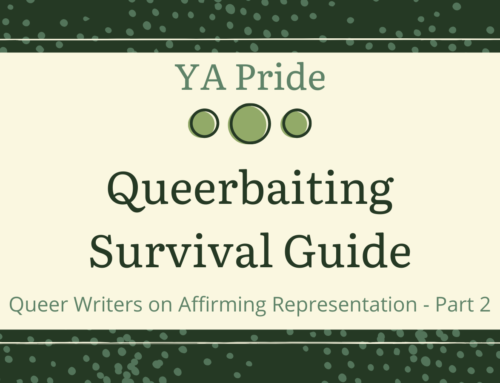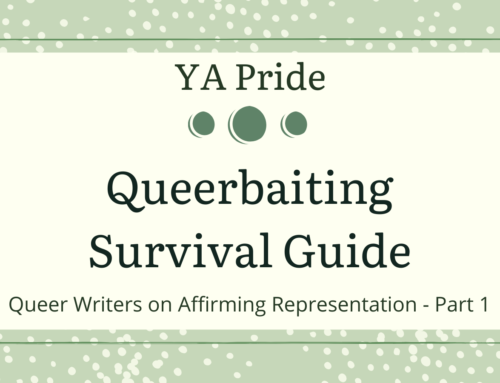by Vee S.
Transgender people, like most marginalized groups, have continuously had their stories taken from them. Throughout the years, they’ve been told that the feelings of their oppressors are more valid and important than their own. Their stories have been repositioned to put cisgender people in the center of them.
This happens in real life– the opinions of cisgender people on trans issues are prioritized above those of transgender people—and in fiction. In this post, I focus on the fictional aspect, and how it relates to real life.
In fiction, a narrative has come forth that centers on a cisgender character “learning to accept” a transgender character. I call this the “acceptance” narrative– emphasis on the quotation marks. In the past decade or so, this narrative has emerged in YA literature. (Luna by Julie Anne Peters, Almost Perfect by Brian Katcher, and Jumpstart the World by Catherine Ryan Hyde.)
An “acceptance” narrative (as I define it) is solely told from a cisgender character’s POV. The narrative follows this basic plot:
- Cisgender character encounters a trans character
- Cisgender character is transphobic and freaks out
- Cisgender character is thrown repetitively into situations with the trans character
- The cisgender character does terrible things to the trans character, feels slightly bad about it.
- The cisgender character thinks awful things about the trans character, feels slightly bad about it.
- Something horrible happens to the transgender character
- The cisgender character realizes the error of their ways and now understands that they shouldn’t be mean to trans people
- Bittersweet ending where the cis character comes to love the trans character, but the trans character has to leave.
- While leaving, the transgender character typically thanks or forgives the cis character
I talk about the YA books that include this “acceptance” narrative frequently, explaining why this narrative is problematic. Whenever I do, the main counterpoint I hear is that these books are realistic, and I probably just don’t want to accept how hard life is for a trans person, or I don’t want to see it represented.
My first question is, to the cis people who tell me this, do you really think that I don’t know this is realistic? Do you really think that I, as a trans person, do not understand that there are a lot of cisgender people who behave exactly like these characters, and think exactly the same way?
Secondly, do you really think I don’t want the experience of how hard life is as a trans person to be represented? I do, believe me. I have read many trans YA books and not a single one has even come close to truly depicting just how damn hard it is.
The “acceptance” narrative puts trans characters through some really hard experiences. But, it totally ignores the feelings and experiences of the trans character. For example, in Luna by Julie Anne Peters, we get to hear all about how hard it is on Reagan, Luna’s sister, to have a trans sibling. We get to hear all about Regan’s problems with Luna transitioning, how she’s afraid to make friends because they might find out, how she’s upset about “hiding” Luna’s secret from Luna’s best friend. We’re also privy to Regan’s wishy-washness on pronouns, and how she thinks of her sister as “he” but switches to using “she” whenever she feels that Luna has “appeared”.
What we don’t get to hear about is any of this from Luna’s perspective. We don’t get to hear what it was like for Luna to go to school in feminine clothing for the first time. We don’t get to hear how hard it is for her to keep this secret from her best friend. We don’t get to hear any of her opinions on what she’s going through, how she sees herself, where she sees herself going…
These books do depict a harsh reality for trans people, but not in a way that I can personally connect to. Unfortunately, I’m just not here for a narrative that says that cis peoples’ inner turmoil about how they’re treating trans people deserves more attention than how trans people feel about being treated that way.
But I’m pretty sure the “it’s realistic!” response isn’t an attempt to try to cis-splain the trans experience, although it comes off like that. What I think is actually being said is that the protagonist’s response to the trans character is relatable. In other words, the people who say this have thought the same things about trans people as the transphobic protagonist did.
I’m not going to shame people for that—I’ve felt a lot of those things about trans people, too. A lot of the beliefs we have about marginalized folks are programmed into us, and it is a process to work through them.
But the fact that these books depict accurate and relatable transphobic cis people does not make them infallible. Books always uphold messages through their narrative structure—whether or not the author intended to do so. People often agree with me that trans teens shouldn’t read these books. But the second counterpoint I hear is that cis people need to read them. The idea is that if a transphobic cis person reads about a transphobic character who has to work through their transphobia, the transphobic cis person will work through their own transphobic beliefs, and become more accepting. Unfortunately, it hasn’t worked that way. In fact, some people who’ve read these books have said far worse things about trans people than those that haven’t bothered to read anything about transgender people. The problem is, the cis protagonists don’t actually work through their transphobia. While the “acceptance” narrative takes the cis character to task for being “mean,” it doesn’t challenge the transphobic beliefs or actions of the character. It doesn’t call out their judgement, fetishization, or objectification of the trans character. It doesn’t challenge the notion that trans men and women aren’t really men or women; that trans people are pretending, or putting on an act; that it’s ok to be wishy-washy on pronouns. In some ways, the “acceptance” narrative is very similar to the “hate the sin, love the sinner” mentality (though religion is typically not involved in the former). That mentality positions gay people as depraved lost souls who just can’t help being gay. It positions the straight people who “accept” them as holier-than-thou saviors. It allows homophobic people to continue to be homophobic and while also feeling good about themselves because they can forgive and love and accept gay people. The “acceptance” narrative functions in the same way. It positions trans people as depraved, crazy, and pitiful. It says that all cis people who can find it in themselves to not be terrible to them deserve gold stars. It says they don’t need to challenge their transphobia, because of course trans men and women aren’t real men and women. Of course they’re kidding themselves. Of course it’s OK to judge and objectify them. The narrative never challenges this behavior. It actually—very subtly and insidiously—supports it. It lets cis people off the hook, placing all the blame for their beliefs and behavior on the trans person. It positions trans people as a stepstool for cis people to use to feel good about themselves. Certainly, not all cis readers of these books will come out of the book thinking this way about trans people. I know dozens of wonderful cis allies who’ve read (and liked) a book that upholds the “acceptance” narrative. And in many cases this narrative is a stepping stone for many cis people into truly challenging their thoughts and behaviors. However, that’s not the case across the board, and I feel that what this narrative actually upholds gets swept under the rug. This narrative needs to be challenged. The three best-known trans YA books fit this “acceptance” narrative. That is changing—slowly—as trans YA that moves beyond this narrative gets more recognition. But by and large if you ask someone for a recommendation of a trans YA book, they’ll eagerly point you toward a trans YA book that has the “acceptance” narrative in it. I think this praise comes from the fact that for so many people this is the only book they’ve read with a trans character in it. They’re unaware of anything else existing. As a result, these books get hyper-praised, and the narrative is (almost) never questioned. I‘m sure that the community is trying to be supportive and inclusive by recommending these books. Whenever someone does point out that one of these books is problematic, others chime in and treat it as an intellectual debate. People take “devil’s advocate” positions (“what if a trans person wrote a book like this?”) or say meaningless things like “you didn’t get the point of the book”—both of which completely derail the conversation. I know that a lot of this is because people really don’t understand the narrative. (It’s typically not the narrative that is pointed out as problematic, but specific elements of the specific books. Those critiques are incomplete and very easy to refute with “but it’s realistic!”) And that’s why I’m writing this post. Because for me, as a trans person, this goes so far beyond an intellectual discussion. The “acceptance” narrative doesn’t just show up in these books—it also shows up in how trans people are treated in the world at large. And, specifically, it shows up in how we’re treated in the YA community. When trans people speak about trans representation in YA, they are often told (sometimes by the author themselves) that we should be grateful for this representation, that authors are “allowed” to write about anyone, or that we’re stirring up an “interesting debate.” Many reviews of trans books misgender the characters, present them as people who are “pretending” to be a different gender, and include such phrases as “kudos to the [cisgender] author for writing about such a controversial issue.” In discussions about trans representation and transgender people, cisgender authors of trans YA are given authority to speak on trans issues, with very few people questioning when they say incredibly problematic things. I’m sick and tired of how trans people are treated in the YA community. It is not a safe space for trans people, and I want to make it into one. I think that most of the community wants this too. Unfortunately, many people have made a lot of inappropriate assumptions about how it is OK to talk about and treat trans people. So how do we challenge those assumptions and change the behavior? Well, one way is to challenge this narrative. Because the “acceptance” narrative mirrors how trans people are treated in the YA community, and because the narrative and the behavior are both assumed to be OK, challenging the narrative is a very effective way to challenge the behavior of the community. (The flipside of this, is that brushing it aside as “just a book” or “realistic” furthers the unquestioned acceptance of this behavior.) So what can you do? When you see one of these books recommended, let the person know the narrative is problematic. Maybe point them towards this post. That, in my mind, is an important first step. If you want to challenge more of the real-life communal behavior, start with these things: Hopefully, this post will help people look at this narrative in context, and people will stop excusing it. Understanding why a narrative is problematic can reveal so many things about the way we’ve been trained to perceive the world. I really hope that this post will be one of the stones in the river that will create ripples of change. We all need to understand what the “acceptance” narrative says, and look at the extreme acceptance of it in the YA community. [i] I don’t believe that any of these authors set out to do damage—in fact, I think that set out with the very best intentions in mind. In an interview, Julie Anne Peters (author of Luna) said: “I’m not trans. I never will be. My authenticity bias couldn’t be compromised. To be authentic and honest, the narrator, the main character, would need to act in the role of observer. I decided to create a sister for Luna, Regan. Regan would be Luna’s confidante throughout life and in that way she could see, and relate to the reader, the childhood manifestations of being born transgender.” I can’t speak for the other authors, but I would bet that their reasons for writing their book the way they did would be very similar. Also, specific to the case of Luna, I fully recognize how groundbreaking it was. Luna was the first YA book published with a transgender character, and it opened a lot of doors. [ii] Some great trans authors/writers to follow: Casey Plett, Morgan M Page, Tom Leger, Cheryl Morgan, Alex Gino, Everett Maroon, Pat Schmatz, Kate Bornstein, Janet Mock, Charlie Jane Anders, Julia Serano —
